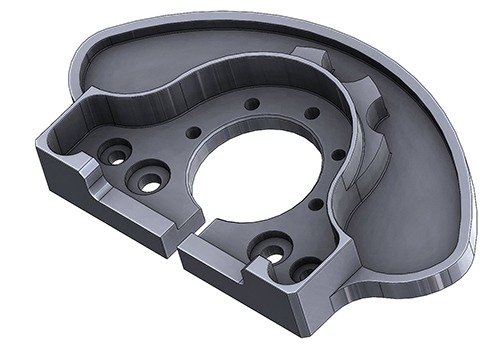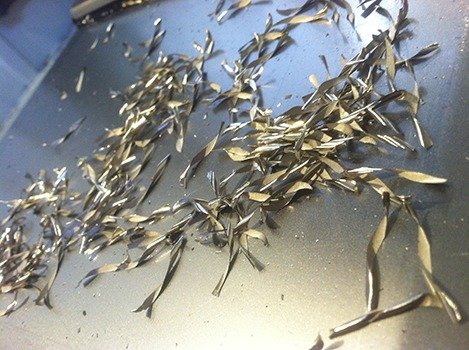Join the forum for Designers!
Your expertise is vital to the community. Join us and contribute your knowledge!
Join the Forum NowShare, learn and grow with the best professionals in the industry.
Dynamic Motion technology powers numerous toolpaths within the Mastercam solutions lineup. Essentially, Dynamic is a nuanced and meticulous set of proprietary algorithms that optimize machining. One subset in the Dynamic family is 2D Dynamic. Use this blog as a guide to what it is, how it works, and how it could benefit you.
What is 2D Dynamic?
2D Dynamic is a function within the Mill solution specially designed to optimize cutting within 2D applications. This is when the cutting tool or stock material is only moving along two axes. For example, if a spindle is moving back and forward as well as right and left, but it is not moving up and down, then the operation can be called 2D. For 3D applications, there is another set of Dynamic tools. 2D Dynamic increases tool and machine life while reducing cycle times.
How and When is 2D Dynamic Used?

Like all Dynamic toolpaths, those in the 2D Dynamic roster excel anytime a machine is cutting more than just a straight line. To be clear, that’s just about every single part that could come through shop. To access 2D Dynamic, users can simply use the Toolpath tab in their interface. After finding and applying their chosen toolpath, they can use the same techniques for adjusting their traditional toolpaths to adjust the Dynamic toolpaths.
How Does 2D Dynamic Help Mastercam Users?
Incorporating new machining strategies allow users to increase the efficiency of the very same machining centers and tooling that they currently have. Because Dynamic toolpaths come standard with their respective Mastercam solutions, users don’t even need to invest more to do this kind of upgrading. Dynamic increases material removal rates by up to 70 percent, improves surface finishes, and lengthens tool life.

Traditional part programming often fails when it comes to directional changes during machining, like in tight corners. Tools can be over-engaged or buried in these sections, causing a chain of damage. To get ahead of this problem, programmers often plan their feeds and speeds for the worst-case scenario (in this case, around the directional change) and apply them to their entire toolpath. That means that, for the majority of the toolpath, the tool is operating outside of its manufacturer’s recommended parameters. The result is longer cycle times and tools that are worn out much too quickly.
How Does 2D Dynamic Work?

Dynamic toolpaths work on the premise of radial chip thinning, which consists of optimally engaging the tool. Multiple factors determine how well a tool is able to meet its target chip load: spindle speed, feed rate, and toolpath motion. When all three are balanced and the tool is engaged precisely how the manufacturer intended, the maximum amount of excess heat is evacuated with the chips, away from the part being made. The way Dynamic toolpaths do this is by reducing the stepover while increasing the feed rate so as to keep the chip load within a tool’s unique specifications.
Join the forum for Designers!
Your expertise is vital to the community. Join us and contribute your knowledge!
Join the Forum NowShare, learn and grow with the best professionals in the industry.

